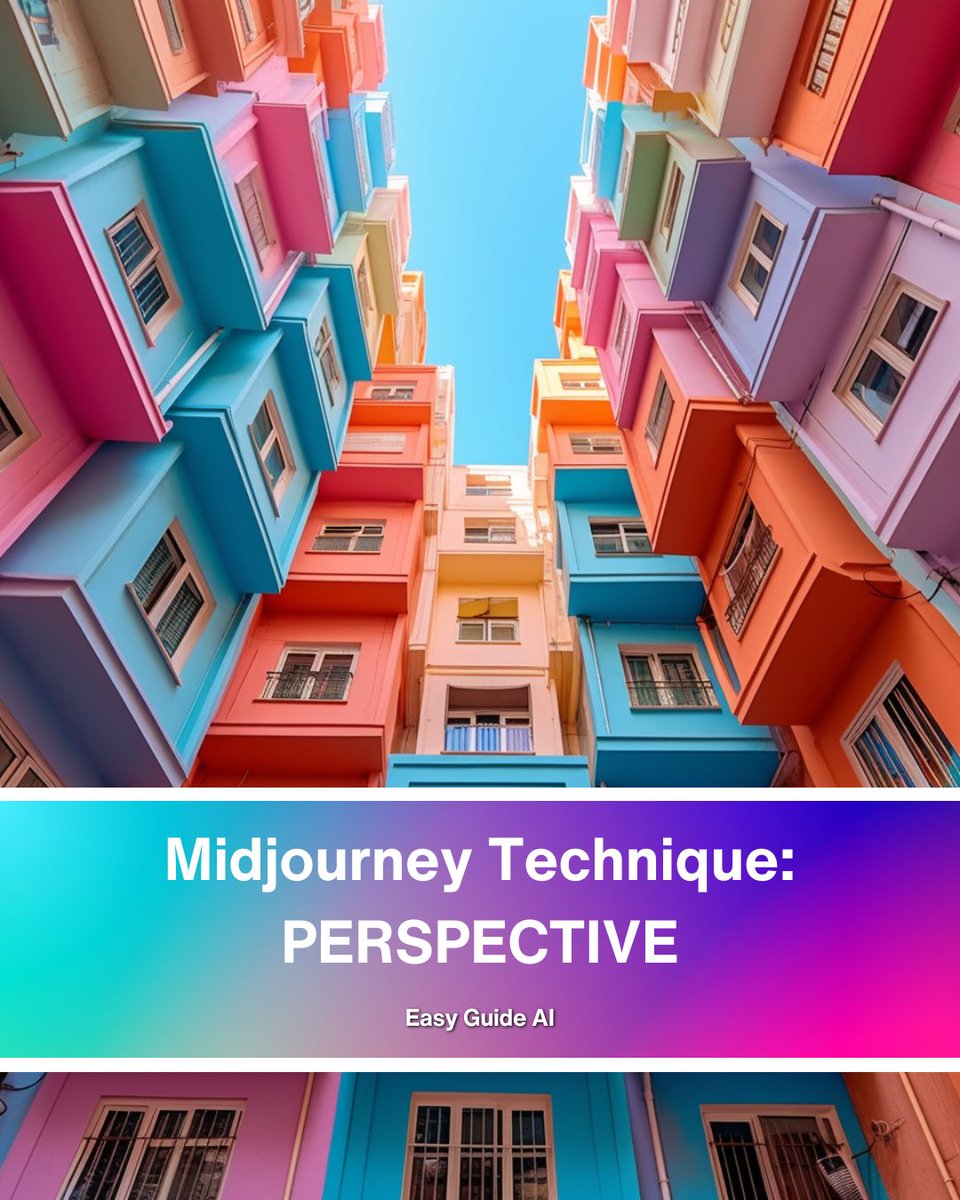📕AI image techniques: How to use Perspective
→Perspective gives depth and dimension to images
→It dictates the visual narrative, making your photos stand out
Perspective isn't just a tool; it's an art form
#AIart #AIArtworks #AIArtGallery #AIphoto #aiphotograpy
→Perspective gives depth and dimension to images
→It dictates the visual narrative, making your photos stand out
Perspective isn't just a tool; it's an art form
#AIart #AIArtworks #AIArtGallery #AIphoto #aiphotograpy

1. Bird's Eye View
shooting your subject from directly above.
→When to use: emphasize patterns, symmetry, or reduce background clutter.
→When to avoid: When the subject's details and expressions are vital - they may get lost.
Tip: use this for characters looking up



shooting your subject from directly above.
→When to use: emphasize patterns, symmetry, or reduce background clutter.
→When to avoid: When the subject's details and expressions are vital - they may get lost.
Tip: use this for characters looking up




2. Worm's Eye View
Capture your subject from a low angle, as if a worm were looking up.
→When to use: to make your subject look more imposing or emphasize the sky/background.
→When to avoid: When the underside of your subject doesn't look good
Tip: use to show power & force



Capture your subject from a low angle, as if a worm were looking up.
→When to use: to make your subject look more imposing or emphasize the sky/background.
→When to avoid: When the underside of your subject doesn't look good
Tip: use to show power & force




3. Long Perspective
Use a long lens to compress space, making objects seem closer together.
→When to use: to emphasize depth or layering in a scene.
→When to avoid: When you want to highlight individual elements distinctly.



Use a long lens to compress space, making objects seem closer together.
→When to use: to emphasize depth or layering in a scene.
→When to avoid: When you want to highlight individual elements distinctly.




Short Perspective
Use a wide-angle lens to exaggerate space, or get closeup detail
→When to use: to capture a vast scene or exaggerate perspective.
→When to avoid: When it causes distortion or makes the main subject seem too small.
#aiphotos #aiartcommunity #AIArtGallery



Use a wide-angle lens to exaggerate space, or get closeup detail
→When to use: to capture a vast scene or exaggerate perspective.
→When to avoid: When it causes distortion or makes the main subject seem too small.
#aiphotos #aiartcommunity #AIArtGallery




• • •
Missing some Tweet in this thread? You can try to
force a refresh

 Read on Twitter
Read on Twitter














